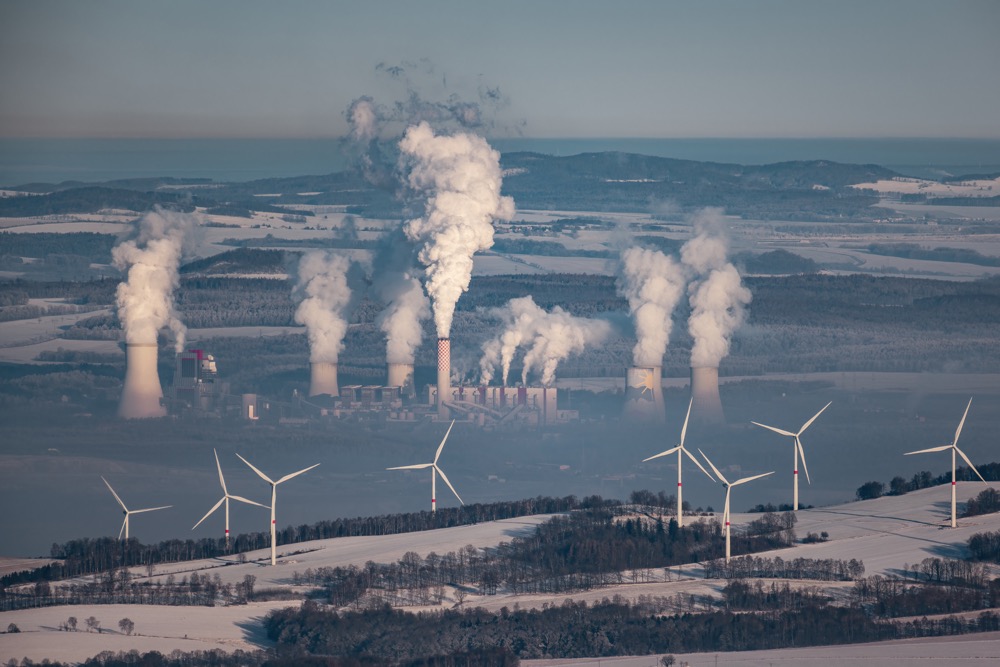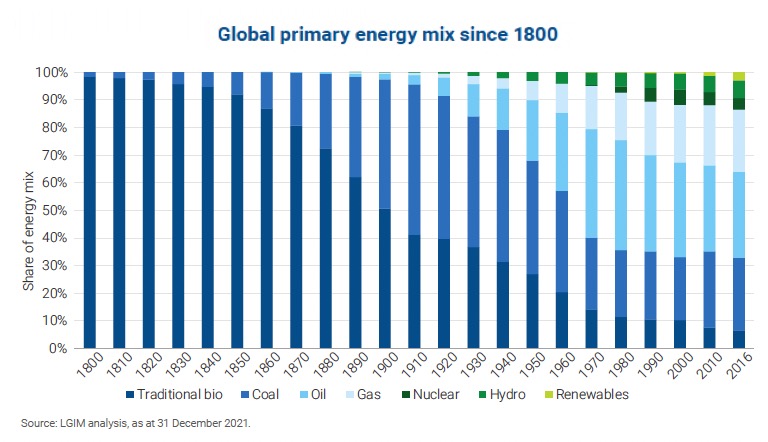220-year chart shows “no evidence” green energy transition is underway

Renewables only account for 30% of incremental primary energy demand meaning global economic growth has not decoupled from growth in emissions.
A new research report produced by BHP and Legal & General Investment Management titled The Energy Transition Dilemma has a number of graphs that vividly display the daunting task ahead to combat global warming.
None more so than this chart going all the way back to 1800 showing changes to the primary global energy mix. According to the authors, the past two transitions – from wood to coal, and from coal to oil and gas – took between 70 and 100 years for the new source of energy to reach 50% market share.
While technological change is certainly accelerating, the report points out that enabling technologies typically take multiple decades to effect large scale change: in steelmaking moving from open hearth to blast furnaces took 60 years, electrification of US housing stock lasted 80 years, and converting global port infrastructure to handle container shipping took around 30 years to complete.

Today, low carbon sources, which in the study are defined as nuclear and renewables including bioenergy, account for around 15% of global primary energy demand (the share is higher for final demand):
That share has been growing consistently over time, accelerating since the financial crisis in 2008. Yet so far, there is no evidence of the start of any “energy transition”.
Low carbon energy is yet to supply at a global level more than 100% of the incremental demand for energy. Only when these low carbon energy sources are growing faster than (or at least at the same rate as) overall energy demand will action start to match the rhetoric.
To date, renewables meet around 30% of incremental energy demand, with the broader low carbon contribution slightly higher. Market share continues to grow but not nearly fast enough to halt the level of global emissions and decouple growth in the economy from growth in emissions, let alone start to structurally lower emissions.
{{ commodity.name }}
{{ post.title }}
{{ post.date }}

5 Comments
David A Hasenford
The way I see the graph, renewables have tripled or quadrupled in the last 6 years.
Frik Els
On a proportional basis, yes, but it is not replacing fossil fuel: “Low carbon energy is yet to supply at a global level more than 100% of the incremental demand for energy.”
Ian St. John
The chart is somewhat distorted. IT goes back way before CARS were invented so obviously it mainly captures the rise of fossil fuels. The transition is real but only in the last two decades which is too small to see clearly.
Compare the slow rise of oil from 1890 or so with the rise in renewalbles from 1990 and you can see that the renewable transiton is proceeding at about the same early pace as the petrol transition.
Jon
The only way to make the transition happen is to stop population growth. It’s also a great way to save the planet from our displacement of the natural world with our Increasingly disconnected yet consumptive living environment
Mark Harder
I think this is the proper way to think about the problem. The percentage contribution of heavy hydrocarbons has been decreasing recently as the contributions of methane and non-fossil energy sources has been and continues to be increasing. Unfortunately, our total use of energy has outstripped the contributions made by sustainable sources. However, that does not mean that a green energy transition is not happening.